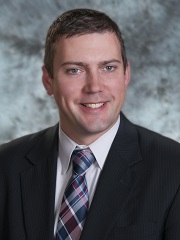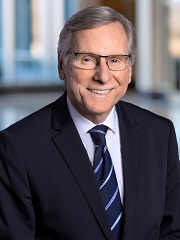‘A mountain of work’: Lessons from 2 organizations that restarted elective procedures after the COVID-19 moratorium
- Hospitals in New York state are restarting elective surgeries after having suspended them per a state order in response to the COVID-19 pandemic.
- Leaders began the process by examining every workflow to assess what they needed to change in the new environment.
- One challenge has been figuring out how to convince patients that it is safe to return.
In late March, by order of the governor’s office, hospitals in New York state halted all nonemergent and nonurgent procedures. The purpose was to increase capacity for a potential surge of COVID-19 cases.
Not surprisingly, the operational impact was profound. Buffalo-based Catholic Health, for example, experienced an 80% drop in surgery volume through mid-May. Given that surgery cases comprise 45% of the health system’s revenue base, the decline translated into “a significant hit to our top-line financials,” said Russell Edwards, CPA, vice president of finance and corporate controller.
With the pandemic showing signs of waning in the state, hospitals are starting to return to normal operations. Although that development is welcome for hospitals’ balance sheets and for their ability to serve patients, the challenges are considerable.
“It’s been a mountain of work, I’ll be honest with you,” said Eddie Bratko, president of Mercy Hospital of Buffalo and leader of Catholic Health’s perioperative response team. “And we’ve really only been at it for about three weeks.”

Leaders with Catholic Health and Putnam Hospital Center in Carmel, New York, described the steps their organizations are using to return to something approaching normalcy. The lessons they shared are applicable as other hospitals prepare to undertake the same transition.
Look at everything
“We had to look at every single workflow, policy and procedure that we have that governs the perioperative process to make sure that we redesigned it and reviewed it so that we could do it safely in a post-COVID environment,” Bratko said.
New practices at Catholic Health and Putnam Hospital Center have involved:
Social distancing. “We’ve made sure seating is appropriately spaced so that patients are not close to each other,” said Peter Kelly, president of Putnam Hospital Center. For ambulatory procedures, the hospital asks patients to stay outside, then phones them when it is time for preop.
No-visitor policies. Staff at both Catholic Health and Putnam Hospital Center greet family members of patients at the entrance and provide pertinent information, including an explanation that they’ll be contacted when they can return to pick up the patient.
COVID-19 screening. This step was driven by a state mandate that patients undergo screening for the coronavirus within 72 hours of any procedure. To fulfill that requirement, Catholic Health set up drive-through testing at three of its emergency departments.
“The most challenging thing was getting a process in place where we could get the test turned around with enough time to reschedule a case if needed,” Bratko said. “If you’re testing 72 hours in advance, you need those results 24 hours before the case in order to cancel, if that’s what needs to be done.”
When patients and staff arrive at Putnam Hospital Center, they have their temperatures taken and are asked whether they’ve had COVID-19 symptoms such as fever and cough in the previous 24 hours. “Every staff member who comes into the hospital every day, myself included, goes through that same vigorous check,” Kelly said.
PPE. With personal protective equipment (PPE) such as N95 masks in short supply, Catholic Health compiled a grid that shows what PPE is needed for which types of patients.
In instances when an N95 mask is not required but a clinician prefers to wear one anyway, leaders strive to educate the clinician about why a mask isn’t needed. If the clinician still insists on wearing one, that request is granted.
Start slowly
For the first week after restarting elective procedures, Putnam Hospital Center and its two sister hospitals in New York operated at about 30% to 40% of capacity in their ORs.
“We didn’t want to fully tax the system until we’re absolutely sure that all of these processes to keep everyone safe are working and we don’t have to make any modifications,” Kelly said.

During the moratorium, hospitals in New York still had authority to perform emergent and urgent procedures. The definition of urgent was murky, however, and in some instances, delaying procedures by more than a few weeks can cause serious complications or exacerbate a patient’s condition.
In the weeks leading up to the resumption of elective procedures, Bratko said, a group of Catholic Health clinical leaders met to go through every specialty and separate urgent cases from legitimately elective procedures. The former received priority by several days during the restart.
Account for costs
Grants from the CARES Act Provider Relief Fund help cover lost revenue from the cancellation of elective procedures but don’t address the cost of adding components such as preoperative COVID-19 screening, not to mention the vast expenses related to treating COVID-19 cases, Catholic Health’s Edwards said.
“We’re going to require some type of additional funding or budget balancing to make up for that gap, on top of the funding received from the CARES Act,” Edwards said. “Obviously, we know we’re going to be short of budget, but really there’s still a lot of unknowns and uncertainties throughout the summer and the fall in terms of how much of this volume are we able to recoup versus what is lost forever, as well as the likelihood of a second wave or spike of COVID cases.”
Communicate with patients
A challenge in implementing preoperative COVID-19 screening is the obligation for patients to make at least two appointments before their procedure: one for the standard set of tests a week or two ahead of time, and a second for coronavirus testing.
“We’ve worked with our PR team to put flyers in place … to just over-communicate everything that we’re doing,” Bratko said.
Catholic Health also compiled FAQs for its surgeon practices to help patients “understand all of the work that the perioperative response team did to go through policies and procedures,” Bratko said. Patients also can use a link on the system’s website to get information.
Social media has been a valuable channel, especially for reaching the set of patients who may be reluctant to visit the hospital but urgently need care. Some of the messaging simply boils down to “We’re here. Don’t wait.”
Putnam Hospital Center’s Kelly echoed the importance of ensuring that surgeons know how to communicate the new protocols to patients.
“When you’re sick, you say, ‘I have to trust my doctor,’” Kelly said. “We have to make sure surgeons are comfortable in reassuring their patients that we have done everything possible to make this a safe environment.”
Think long-term
The pandemic may be slowing in New York, but it will be top of mind for hospital leaders in the foreseeable future. New processes must be sustainable.
“We wanted to hardwire [them],” Bratko said.
At Putnam Hospital Center, Kelly said, “We’re not looking at a post-COVID era. We’re looking at a post-pandemic era right now. COVID will be with us for a long time.”





